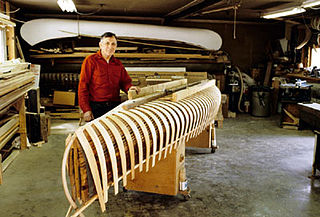
Bangor is a city in the U.S. state of Maine, and the county seat of Penobscot County. The city proper has a population of 33,039, making it the state's 3rd largest settlement behind Portland (66,882) and Lewiston (36,221).

Brewer is a city in Penobscot County, Maine, United States. It is part of the Bangor, Maine Metropolitan Statistical Area. The city is named after its first settler, Colonel John Brewer. The population was 9,482 at the 2010 census.

Old Town is a city in Penobscot County, Maine, United States. The population was 7,840 at the 2010 census. The city's developed area is chiefly located on the relatively large Marsh Island, though its boundaries extend beyond that. The island is surrounded and defined by the Penobscot River to the east, and the Stillwater River to the west.

Frankfort is a town on the Penobscot River estuary in Waldo County, Maine, United States. The population was 1,124 at the 2010 census.

Penobscot Indian Island Reservation is an Indian reservation for the Penobscot Tribe of Maine, a federally recognized tribe of the Penobscot in Penobscot County, Maine, United States, near Old Town. The population was 610 at the 2010 census. The reservation extends for many miles alongside 15 towns and two unorganized territories in a thin string along the Penobscot River, from its base at Indian Island, near Old Town and Milford, northward to the vicinity of East Millinocket, almost entirely in Penobscot County. A small, uninhabited part of the reservation is in South Aroostook, Aroostook County, by which it passes along its way northward.

The Penobscot River is a 109-mile-long (175 km) river in the U.S. state of Maine. Including the river's West Branch and South Branch increases the Penobscot's length to 264 miles (425 km), making it the second-longest river system in Maine and the longest entirely in the state. Its drainage basin contains 8,610 square miles (22,300 km2).

Peleg Wadsworth was an American officer during the American Revolutionary War and a Congressman from Massachusetts representing the District of Maine. He was also grandfather of noted American poet Henry Wadsworth Longfellow.

The North Maine Woods is the northern geographic area of the state of Maine in the United States. The thinly populated region is overseen by a combination of private individual and private industrial owners and state government agencies, and is divided into 155 unincorporated townships within the NMW management area. There are no towns or paved roads.
Interstate 95 (I-95) in the US state of Maine is a 303-mile-long (488 km) highway running from the New Hampshire state line near Kittery, to the Canadian border near Houlton. It is the only two-digit Interstate Highway in Maine. In 2004, the highway's route between Portland and Gardiner was changed so that it encompasses the entire Maine Turnpike, a toll road running from Kittery to Augusta.

Joe Seliga was a master builder of wood-and-canvas canoes in Ely, Minnesota.

The West Branch Penobscot River is a 117-mile-long (188 km) tributary of the Penobscot River through the North Maine Woods in Maine. The river is also known as Abocadneticook, Kahgognamock, and Kettegwewick.

Old Town Canoe Company is a historic maker of canoes in Old Town, Maine. The company had its beginnings in 1898, in buildings constructed in 1890 for a shoe business, and was incorporated in 1901. Old Town entered the canoe market as a builder of canvas-covered wooden canoes. In the latter half of the 20th century, the company adopted more modern materials to maintain competitiveness. The company's plant was located along the Penobscot River.

Chestnut Canoe Company was established in Fredericton in the Canadian province of New Brunswick at the end of the 19th century and became one of the pre-eminent producers of wood-and-canvas canoes. The company closed in 1979.

Great Northern Paper Company was a Maine-based pulp and paper manufacturer that at its peak in the 1970s and 1980s operated mills in Arkansas, Georgia, Maine, and Wisconsin and produced 16.4% of the newsprint made in the United States.

The B.N. Morris Canoe Company of Veazie, Maine, produced wood and canvas canoes from 1891 until fire destroyed the factory late in 1919. The shapeliness, style, and workmanship of the Morris canoes and boats made some of the most picturesque craft that were ever built with this construction form.

Searsport is an incorporated town and deep water seaport located at the confluence of the Penobscot River estuary and the Penobscot Bay immediately SE of Sears Island and Cape Jellison in Waldo County, Maine, United States. The population was 2,615 at the 2010 census. Searsport includes the village of North Searsport. The town is known as "the home of the famous sea captains" and the "Antique Capital of Maine".

E.H. Gerrish (1847-1930) is credited with being the first person to sell wood-canvas canoes commercially. From 1882-1909, Gerrish built and sold canoes from a shop in Bangor, Maine. Early Gerrish canoes contain elements of the birchbark canoes upon which they were based. If studied from earliest-to-latest, the canoes of E.H. Gerrish appear to show the morphing of the wood-canvas from its roots in the birch bark to the modern open gunwale canoe.

The Carleton Canoe Company of Old Town, Maine was one of the earliest producers of wood and canvas canoes. From the 1870s, Guy Carleton sold bateaux and birch bark canoes commercially and added a canvas-covered canoe to his product line in the 1880s. Carleton was acquired by Old Town Canoe in 1910, and continued to be offered as a separate entity until the 1940s.

Katahdin Woods and Waters National Monument is a U.S. National Monument spanning 87,563 acres (35,435 ha) of mountains and forestland in northern Penobscot County, Maine, including a section of the East Branch Penobscot River. The monument is located on the eastern border of Maine's Baxter State Park.




















